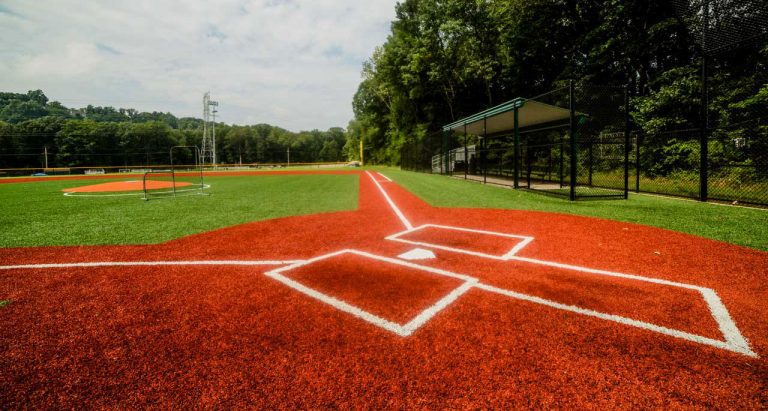Oakwood Park Becomes Hybrid Turf Field

The Transformation to a Hybrid Turf Field
So, picture this. It’s the early spring of 2016 in New Providence, NJ. You’re a kid rushing home from school to play soccer with your friends at the local park.
But when you get there, you’re bummed to find the park is closed! It rained a few days ago, and the field is still muddy and covered in puddles. Sigh. You and your friends will have to wait until next week.
 New Providence residents dealt with realities like this in Oakwood Park. The park’s poor drainage system used to limit the park’s usability, which was especially frustrating because it was one of the only major parks in the area. The rain and subsequent erosion damage created a dangerous environment for everyone and left handicapped users without mobility to move around the field safely. Another problem was that the fields overlapped one another, leading to overuse and deterioration of the park grounds. The lack of lighting also affected usability, as playing mostly had to stop at sundown.
New Providence residents dealt with realities like this in Oakwood Park. The park’s poor drainage system used to limit the park’s usability, which was especially frustrating because it was one of the only major parks in the area. The rain and subsequent erosion damage created a dangerous environment for everyone and left handicapped users without mobility to move around the field safely. Another problem was that the fields overlapped one another, leading to overuse and deterioration of the park grounds. The lack of lighting also affected usability, as playing mostly had to stop at sundown.
New Providence Borough Comes to the Rescue
The Borough, however, recognized Oakwood’s many issues and decided to start a project that would increase safety and playability. They employed Borough Engineer Andrew Hipolit to address these worries and improve Oakwood Park.
The first step was to bring the community on board. The project team held meetings to discuss any public concerns, including effects on the environment, length of downtime, construction schedule and cost burden on residents. With their feedback, it was time for design!

The New Design
 One unique feature is the hybrid turf field, which utilizes natural and synthetic turf. This mixture combines the playability of natural grass and durability of artificial turf, making it more resistant to wear—a problem Oakwood Park’s fields previously struggled with. Further, we installed drainage underneath the entire length of the infield’s synthetic turf to alleviate storm water runoff so that no one will have to wait days before using it after rain. Rain easily erodes natural turf. So, the hybrid turf significantly improved ADA accessibility since it does not become as uneven or broken.
One unique feature is the hybrid turf field, which utilizes natural and synthetic turf. This mixture combines the playability of natural grass and durability of artificial turf, making it more resistant to wear—a problem Oakwood Park’s fields previously struggled with. Further, we installed drainage underneath the entire length of the infield’s synthetic turf to alleviate storm water runoff so that no one will have to wait days before using it after rain. Rain easily erodes natural turf. So, the hybrid turf significantly improved ADA accessibility since it does not become as uneven or broken.
The project added two 80-foot lighting poles to extend play times so that even as it gets dark, everyone can keep playing. These new fixtures have low intensity lights in order to minimize light pollution in the surrounding area. The team also increased roadway access and added new overflow parking, bleachers and picnic benches.
Flash forward to late spring of 2018. You’re still a kid, just a bit bigger, and you and your friends still try to play soccer as much as you can. The difference is that now you can play most days on the hybrid turf field, sometimes until even after the sun sets. You think that you might want to be a professional soccer player one day.
Your park changed a lot, and you and your friends are pumped about the improvements. Yeah, it’s going to be a good summer.

Comments are closed.